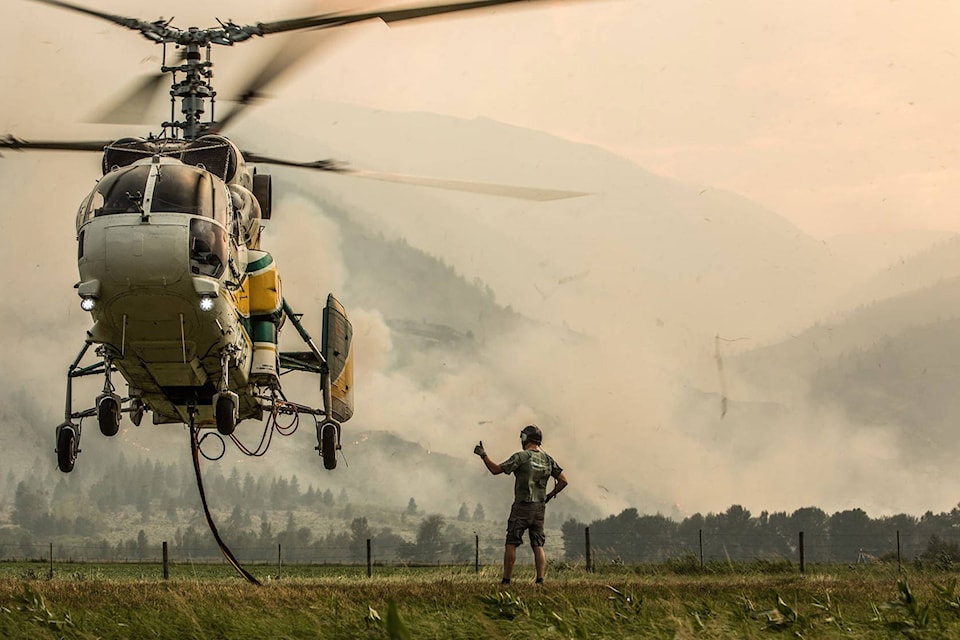Trials of equipment that could help suppress wildfires will be conducted near Penticton during the evenings of July 6 and 7.
The BC Wildfire Service will be conducting aerial trials of night vision goggle (NVG) technology to potentially assist with future firefighting operations.
Night vision goggles work by amplifying the available ambient light, making it easier for the wearer to see features that would not otherwise be visible.
These trials will assess the viability of using night vision goggles and helitankers to drop fire suppressant on wildland-urban interface fires at night.
Wildland-urban interface fires are wildfires that occur in areas where grasslands or forests border on urban developments or infrastructure.
READ MORE: Isolation, drug toxicity lead to spike in First Nations overdose deaths amid pandemic: FNHA
BC Wildfire Service is conducting the tests to enhance their knowledge of NVG helitanker protocols, including how night procedures would differ from daytime air operations.
In 2019, night vision technology was tested on three trial flights over the Richter Mountain and Eagle Bluff wildfires. The goggles helped the air crew map these incidents at night and identify hot-spots to assist firefighters on the ground. The upcoming work will expand on the night vision testing that was conducted in 2019.
Last year’s trials were the first of their kind in Canada, and they affirmed that additional trials were warranted to further explore the capabilities of night vision systems to support wildfire suppression activities.
If the results are positive and the BC Wildfire Service believes the program is worth pursuing, these trials will help guide decisions about how to incorporate this technology into the BC Wildfire Service’s future firefighting activities.
The BC Wildfire Service will use two NVG-capable aircrafts for these trials. Multiple helitanker “drops” will be completed in a controlled environment at an established training site with no fires burning. Ground observers stationed outside of the drop zone will evaluate each drop for accuracy and effectiveness.
Any challenges identified on the first day of the trial will allow the test team to make adjustments and modify its approach on the second day.
READ MORE: RCMP investigate bear spray assault outside Penticton pub
@PentictonNews
editor@pentictonwesternnews.com
Like us on Facebook and follow us on Twitter.
